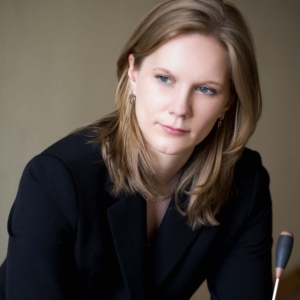Mystical Legends
March 28, 2025
By Hannah Schendel, WSO Music Director
Please join us for the final performance of this season!
Sunday, April 27, 2025 at 3:00 pm
Eisenhower Community Center
1001 Highway 7
Hopkins, MN 55305
Classical music has the power to transport us to different times, places, and emotions. The three works on this program offer a captivating blend of rich storytelling, vibrant orchestration, and emotional resonance.
Overture to Prince Igor by Alexander Borodin
Borodin’s Overture to Prince Igor is a highly energetic and evocative work. This orchestral introduction to his opera Prince Igor—a piece that was left unfinished at the time of Borodin’s sudden death in 1887—captures the essence of the adventures and military operations found in the medieval Russian epic, The Lay of Igor’s Campaign.
Although Borodin had not completed the full opera, his colleagues and fellow composers Nikolai Rimsky-Korsakov and Alexander Glazunov took it upon themselves to finish the work based on Borodin’s sketches and piano performances.
Flying Dragon Concerto by Gao Hong
We are delighted to perform alongside Gao Hong who is an internationally renowned pipa player. Gao has been featured as a guest artist with the Minnesota Orchestra, teaches at Carleton College, and performs throughout the world.
The Flying Dragon Concerto is a powerful exploration of identity, travel, and inner strength. As a young girl, Gao, was told by a fortuneteller that she was a “flying dragon” due to the time and date of her birth. This prophecy became a metaphor for her nomadic lifestyle—a life of constant motion, where the future is uncertain, and “home” is an ever-changing concept. The Flying Dragon Concerto reflects the emotional journey of her nomadic existence and the continuous struggles and joys that come with living a life full of motion, self-discovery, and creativity.
Scheherazade by Nikolai Rimsky-Korsakov
Rimsky-Korsakov infused many of his compositions with elements of Russian folklore and legends, and Scheherazade is one of his most beloved works, a symphonic suite inspired by the tale One Thousand and One Nights. The story of Scheherazade revolves around the Sultan Schahriar, who, disillusioned by the faithlessness of women, decides to execute each of his wives after their wedding night. However, the clever and resourceful Scheherazade saved her life by telling the Sultan captivating tales and ending with a cliff hanger each night.
Each movement brings to life a new tale from Scheherazade’s legendary worlds. The suite opens with “The Sea and Sindbad’s Ship,” evoking the vast grandeur and mystery of the ocean, followed by “The Story of the Prince Kalandar,” which paints a vivid picture of an adventurous journey. The third movement, “The Young Prince and Princess,” tells a tale of love, while the final movement, “Festival at Baghdad,” concludes with an epic climax, as the sea, a shipwreck, and the image of a bronze horseman combine to create a sense of awe and wonder.
I look forward to seeing you all on April 27 for this final fantastic performance of our 2024-25 season!











